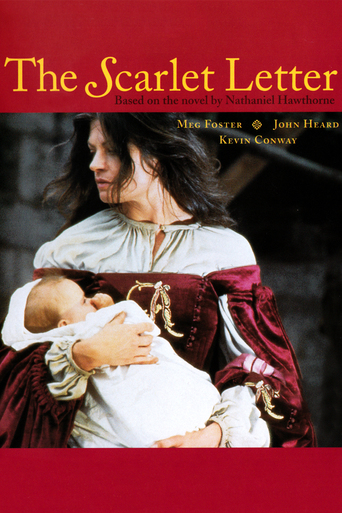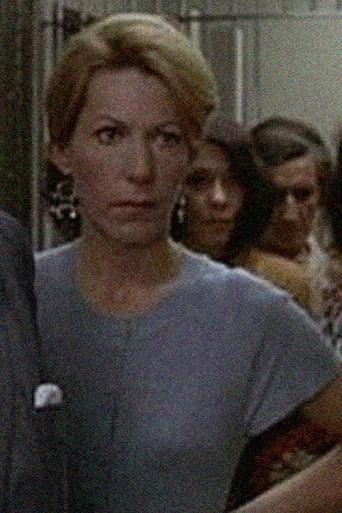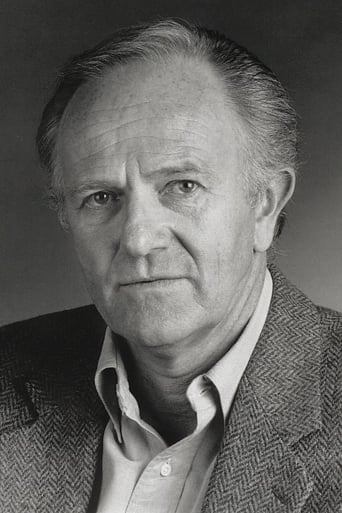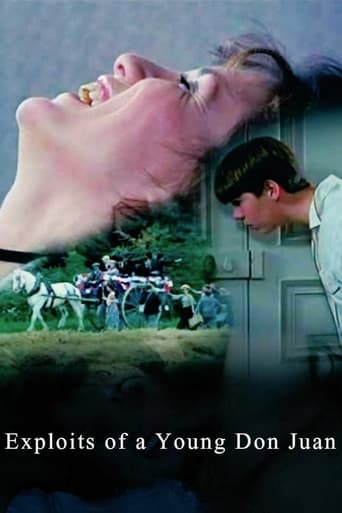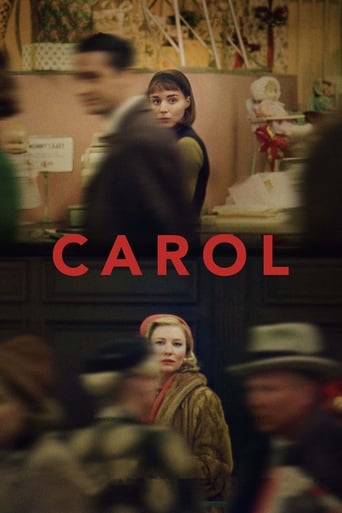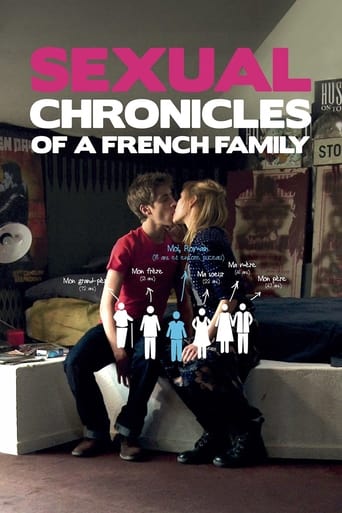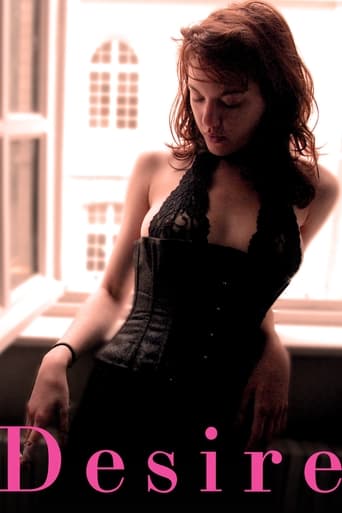The Scarlet Letter (1979)
In the 17th century Massachusetts, a married women, whose husband is missing, has a child with the local pastor. The puritanical residents of her town condemn her to carry the Scarlet Letter of shame. Then the husband shows up.
Watch Trailer
Free Trial Channels
Cast


Similar titles
Reviews
Sadly Over-hyped
It isn't all that great, actually. Really cheesy and very predicable of how certain scenes are gonna turn play out. However, I guess that's the charm of it all, because I would consider this one of my guilty pleasures.
Great story, amazing characters, superb action, enthralling cinematography. Yes, this is something I am glad I spent money on.
Strong acting helps the film overcome an uncertain premise and create characters that hold our attention absolutely.
O.K., I must disagree with the front page summary that this is about a Catholic priest and a married woman. If you knew anything about Boston in the 1640s, it was about PURITANS, who were not (a) Catholic or (b) even Anglican/Episcopal, but otherwise were dissidents from the "established church" of England. One reason they came to America was to be free NOT to be Catholic or Anglican.Now back to the actual story. As others have noted, this production looks as if it were done using home video. The film quality is spotty and uneven. Sound is also unbalanced. Many times when Meg (Hester) is speaking or mumbling, her words are blurred or unidentifiable. Other times, the sound is loud and harsh. The crowd scenes look as if people wearing dress-up clothes are walking awkwardly through a stage set - there is no _feel_ that they are Puritans of the 1640s. I never believed they believed in themselves - they looked like extras. Everyone seems to be walking everywhere - does anyone _do_ anything besides walk around 1640s Boston?Meg Foster plays Hester Prynn, a young married woman who has lost her husband, and who has subsequently borne a child from an adulterous affair. She is silent about the father, and Puritan Boston disparages and condemns her. She is forced to wear a large "A" on her clothes; she embroiders and enhances this letter, and continues to live in town for the next seven years along with her child, Pearl, played by Elisa Erali. She rears Pearl alone in an isolated hut, but begins to win the hard hearts of the townspeople by her unselfish acts. Meg Foster plays Hester as if every emotion is battened down. In most scenes, Meg is stonefaced, speaking every line in the same tone. After three hours of this, it gets a bit monotonous. She does have some tears in the final scene, however.John Heard plays Arthur Dimmesdale, the errant pastor. He is beloved by his flock, but he carries a secret shame that grows daily over seven years, causing him sickness and debility. John Heard, thin in this film, does an adequate job playing a man playing a pastor. He thunders at some moments from the pulpits, and at other times spouts proverbial wisdom and admonishment. Like Meg Foster, John plays Arthur in a flat manner. Even his loud cries seem to come from an automaton. At the end of the movie, John/Arthur confesses his act, bringing Hester and Pearl to the very scaffold where Hester was first condemned, and then dies. Of course the crowd is shocked - _shocked!_ - by his confession. And they go about their business.Kevin Conway plays Roger Chillingworth, Hester's husband, who was rescued by Indians and taught the magic herbal lore of unspoiled savages. He comes to Boston to find his wife with a baby by an unnamed father, confronts Hester secretly, and somehow convinces her to keep quiet about his true identity. Kevin/Roger befriends John/Arthur, and in spite of his obvious wig and makeup convinces Arthur to let him treat Arthur's illness, which grows worse under his care. Arthur apparently thinks this is O.K., and he grows sicker and sicker. When Arthur finally dies, Roger disappears in the bulrushes, where we think he would have profitably and solitarily occupied himself much earlier in the film.Much of the anguish of this story would have been moot had Hester (a) been a little less trusting of Arthur, (b) told Arthur that a _man_ would stand up for his woman, (c) told Roger to bugger off with his plans of secrecy, (d) moved away to another town or back to England, (e) expressed a bit more emotion. But the plot of this story required Hester to do stupid things throughout the movie/book.Arthur, of course, is portrayed as the typical pious person who can't keep his zipper zipped, and yet needs to appear to be righteous. He is aggrieved by his actions in his adultery, but cannot confess his actions even as he berates others for their failings. Of course, no moral person has any ability to admit fault, so Arthur has to sicken and die, rather than come to a reasonable state of admitting his part in Hester's adultery. It takes two to tango, but Arthur never returns to the dancehall.Roger's continual destructive actions against Arthur seem plain as day to the viewer/observer, but somehow every citizen of Boston is blind to his plans. These, of course, are people who've come to America to build a New World, who have a keen eye for reality, who have to eke out their living in a hostile, cold, and forbidding world - and yet they don't see the obvious evil nature of Roger. They are rubes taken in by a ruthless proto-Yankee.The most disappointing thing about this story and production (and there are plenty of disappointments) is the general feeling of unreality in the acting, costumes, and sets. It looks like one big Hallowe'en party, with everyone very self-conscious about their costumes. Nothing looks like it's actually worn or used. While the production takes place in some genuine pioneer locations, it feels like a few carpenters got together to knock together some sets. Given that these Puritans came from England, and that they were skilled workers, it's hard to believe that the slipshod handiwork was real. Fences look "old-timey," as if Puritans couldn't really be bothered with getting railing upright, and yet their clothing is perfectly sewn as if by machine, and completely unwrinkled in all occasions, as if the Puritans also never really lived. It gives the feeling that the producers felt the Puritans were unreal or imaginary people who just walked through life. It does not give the feeling that these Puritans were hardworking and focused people who enjoyed their creation of and membership in a new society.
Well, I can say, that this is one of the most boring movies I've seen. What can you expect from PBS though, right? Yes, the story is interesting, but gahd, there was so much talking.. nothing interesting happens for an hour or so.. Here's what I found wrong with the movie*Like others have said, the baby crying is REALLY REALLY annoying. Then, when the kid gets older, she constantly laughs, which makes me wonder why the mother dosen't just KILL IT. That kid is ANNOYING. ARGHH!*The only reason worth watching is for John Heard, or Meg Foster. BUT, most of the time, Heard overacts.. We see him screaming in points, then the rest of the movie he just walks around with dark circles under his eyes. Some points, the overacting is good I suppose.. He's still pretty sexy in it though.*WHO cares about the 'making of' things they add in on the two tapes.. Who cares about seeing where they filmed? How about some interviews with the main stars DAMNIT!*It looked like something filmed with my camera...It had a homeade feeling to it. If the movie was any good, I wouldn't complain about that though. Now, with all that, the end is okay... after about the first three hours it gets decent. I wouldn't watch it again unless I was at gun point.
I first saw this wonderful production of one of my favorite books, when it was initially shown on PBS in 1979, having been produced by WGBH Boston. This version of the famous novel by Nathaniel Hawthorne, was accurately portrayed, and true to my beloved book. Over the years, each time I re-read the book, I found new levels of meaning to Hawthorne's work. When I found that this PBS version had finally been made available to view again, I was anxious to see it. I was not disappointed. There was in recent years, a movie made of this story, with some very good actors, and a very bad script. I was saddened that in our modern times, and with the chance to utilize the talents of actors like Robert Duvall, the story was "Hollywoodized". In trying to satisfy some idea of what the public might want (i.e. love scenes, happy ending), the delicately written and deeply moving purpose of Hawthorne's book was entirely lost. Not so, with the WGBH rendering. An early New England of around 1649 is portrayed. The high standards and harsh penalties imposed by the Puritan's Protestant church, is what allows for the events to unfold. These were people not far removed from our pilgrim founders. The story begins with a young woman named Hester Prynne, standing upon a scaffold holding her illegitimate baby. She was a married woman, whose husband had been presumed lost at sea, and thereby was known to have committed adultery in the getting of the child. She is pressed to reveal the man with whom she consorted and sinned. She will not. She is resolute. Because of this, her punishment is to wear a "scarlet letter 'A'" upon her bosom. She is gifted with the art of needlework, and embroiders an entirely beautiful and large letter 'A' on a dark red cloth. She wears this day and night, as she strives to raise her little girl, Pearl, in loneliness and poverty, using her skill with sewing as a means of support for them both. We are soon, slowly and purposely, allowed to know who is the father of Hester's child, and partner in her sin. He is the honorable, and beloved of the people, Reverend Arthur Dimmesdale. But while Hester wears her "scarlet letter" openly over her heart, dealing with others scorn and social banishment, the Reverend Dimmesdale hides his same sin inside his heart, and suffers with his own knowledge, all the while the people seem to love him the more for his seeming humility, and self-deprecation. To add salt to the wound for Hester, her husband, who had been found by "savages" and learned much in the arts of herbal medicines, made his way to the young Massechussetts settlement in time to see his wife upon the scaffold. He changes his name, forcing a promised silence from his former wife on the matter, and sets about to find and destroy the man with whom she sinned. Thus begins the slow, well thought out, and well executed plan of Roger Chillingworth. In the semblance of kindness as a doctor, he works upon Reverend Dimmesdale's secret shame, and guilty heart. For Dimmesdale, the shame is not just the sin of adultery. It is the fear of reproach from the people that leads him to choose to keep his part secret. To allow Hester to stand alone on the scaffold. To allow her to bear the chastisement of the entire community by wearing her "scarlet letter". And by putting her in the position of finding her own means to support their child.It is after seven years of his suffering, obvious ill health, and a habit of holding his hand over his heart that the Reverend Dimmesdale is sought out by Hester Prynne, to reveal to him the evil that has been wrought upon him by his supposed friend, Roger Chillingworth. She does this in an attempt to release him from her husbands devilish clutches. To help him to look at the good he has done the community and to cease his slow and determined path to the grave. But in this long desired reunion between the two, Dimmesdale says to Hester, "Had I not loved God, even had I been an atheist, I would long since have found peace. Nay, I never would have lost it." They renew words of love and devotion to each other and look to leave the settlement, in hopes of finding a new life to live and be productive in, and to be together.Hawthorne does not give us our "Hollywood ending", however. He chooses to bid us learn the value of an open admission to decisions and difficulties in life. To understand that the secrets that we carry in our hearts will show upon our outward appearance, whether we want it or no. He allows for God's goodness and mercy to the penitant, even though it may not be in this life that one attains it.This version was produced at a time when PBS was primarily importing the serializations of books from British television. Therefore, it was made in that same style of the 1970's UK productions. The feeling while watching this video, is that of less production, and more of "right behind the camera". In recent years we have all become accustomed to the "movie" feel of the TV movies, or serialized books. Such as those produced by A&E or PBS, often in conjunction with BBC or another UK company (i.e."Pride and Prejudice", "Horatio Hornblower", etc.). Therefore, one must be prepared and not distracted by this type of production. In a way, I find them, interestingly, more intimate. I would say that this production is well worth the length of time spent watching a serialization (4 hrs). It is a deeply moving story, done with accuracy and quality, and wonderful acting. This viewer highly recommends it.
Okay, you know the story. In the puritan New England, a beautiful lady gets impregnated by a (who else)priest. Lady refuses to tell the name of the father and wears a scarlet letter A (for adulteress). The priest, however, goes on living a life where he is considered to be super pious. Beautiful novel by Nathaniel Hawthorne, ghastly adaptation. It drag so long that I stopped caring at the end.

